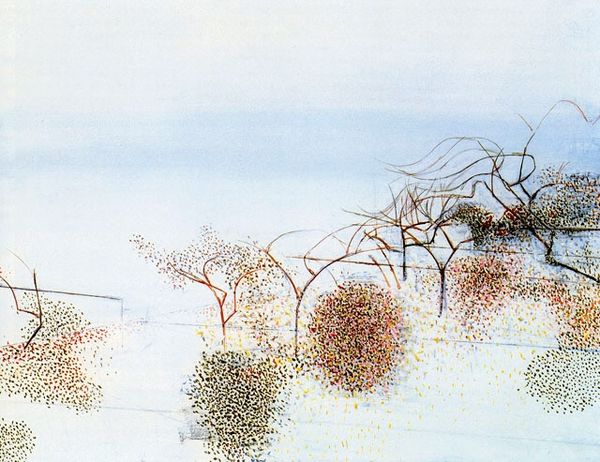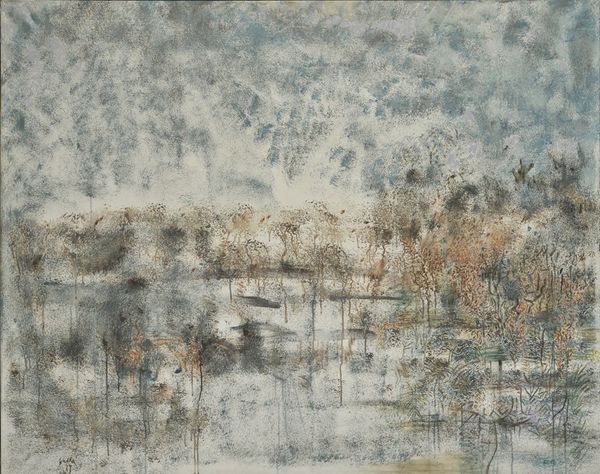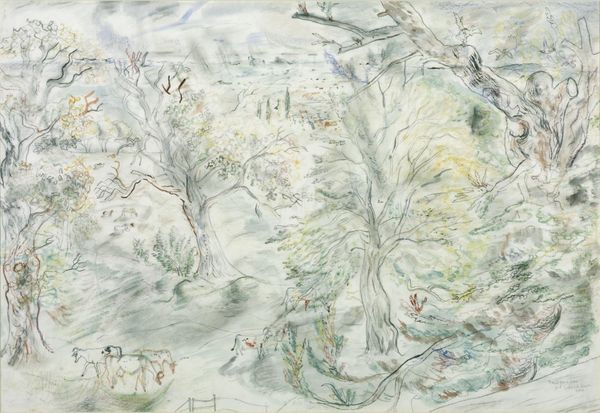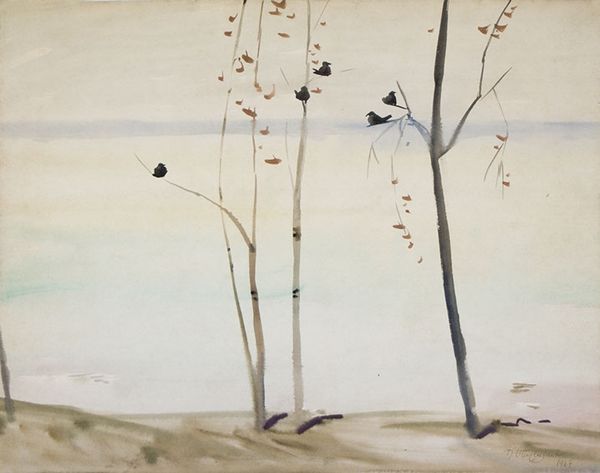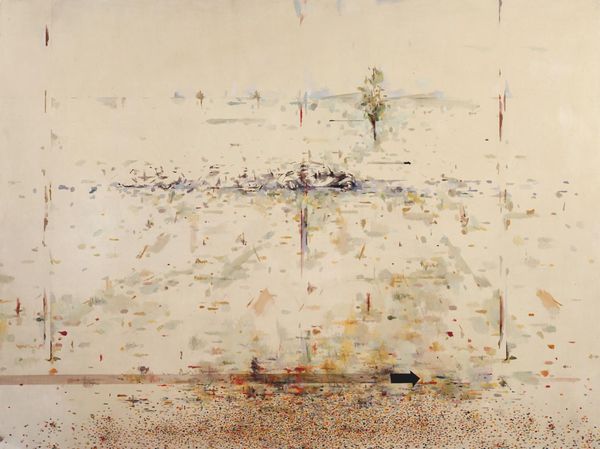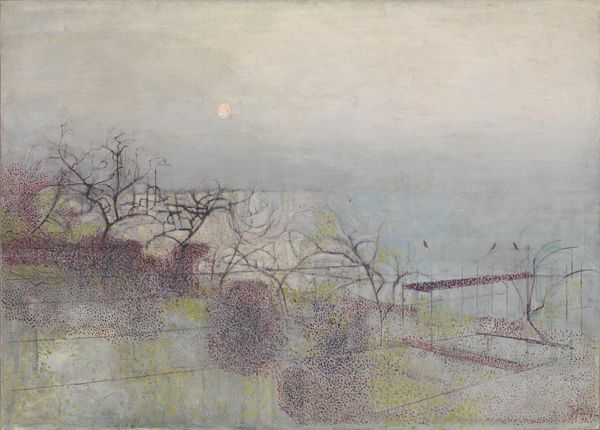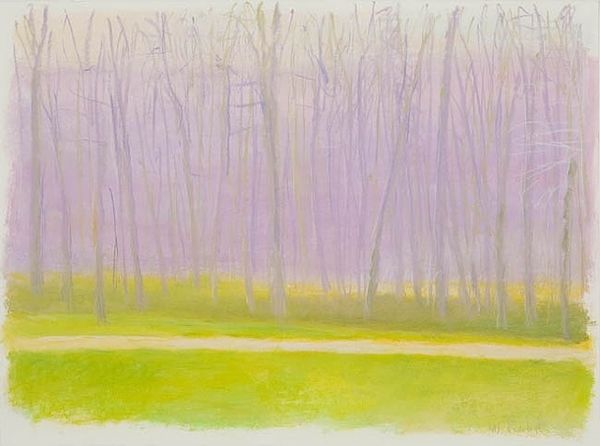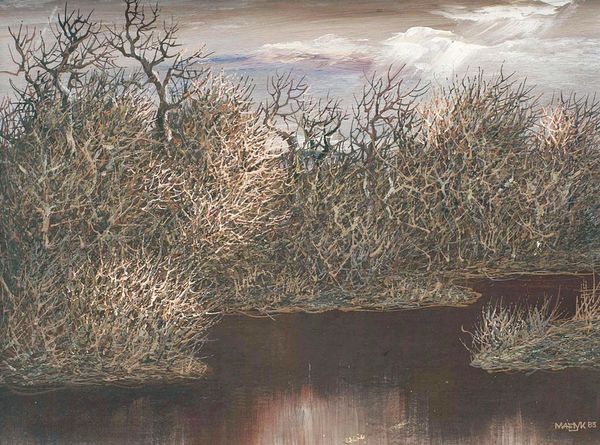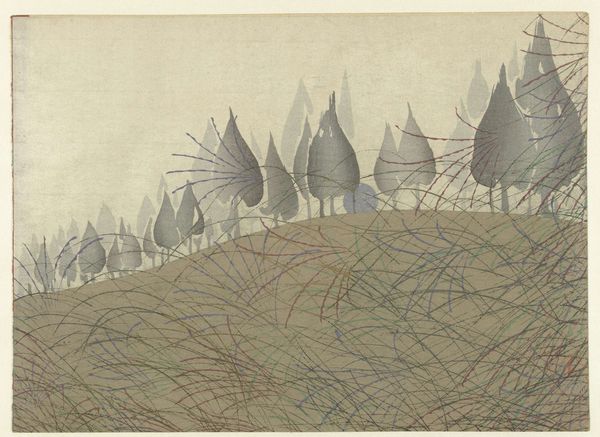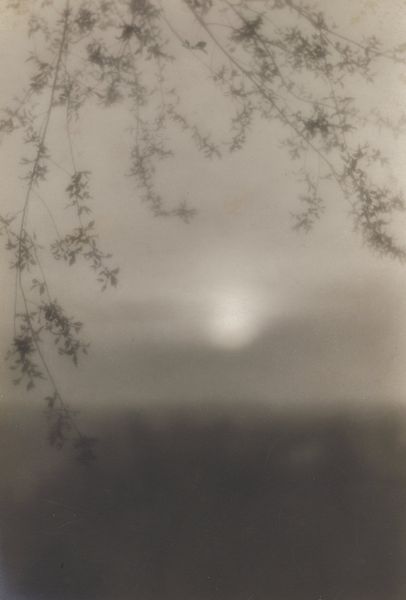
Dimensions: support: 765 x 969 mm frame: 989 x 1193 x 99 mm
Copyright: © Tate | CC-BY-NC-ND 4.0 DEED, Photo: Tate
Editor: Here we have Victor Pasmore’s "The Gardens of Hammersmith No. 2", currently housed at the Tate. The muted colors give it a dreamy, almost ethereal quality. What strikes you most about the formal elements of this piece? Curator: Indeed. Consider the spatial composition; Pasmore employs a flattening of perspective. Observe how the pointillist technique disrupts traditional form, emphasizing a field of color rather than representational accuracy. How does this affect your perception? Editor: It makes the landscape feel less like a place and more like a pattern. I'm also curious about the lines of the trees; they seem to dance across the canvas. Curator: Precisely. The lines and the dots create a tension, a dialogue between structure and fluidity. It's not merely a garden, but an exploration of visual language itself. Editor: I see how Pasmore is more interested in the act of seeing than simply depicting a scene. Thanks for pointing out the nuances of composition. Curator: My pleasure. Reflect on how the artist uses these elements to challenge our notions of landscape painting and representation.
Comments
tate 6 months ago
⋮
http://www.tate.org.uk/art/artworks/pasmore-the-gardens-of-hammersmith-no-2-t07033
Join the conversation
Join millions of artists and users on Artera today and experience the ultimate creative platform.
tate 6 months ago
⋮
Pasmore was successful as both a figurative and an abstract artist. This work was inspired by the view of the back gardens from his studio in Hammersmith, west London. In reality, this exact view did not exist, and it was painted two years after the artist left Hammersmith. This work is part of a series that shows Pasmore gradually moving to a more abstract style of painting. He was described by the art historian Kenneth Clark (1903–83) as ‘one of the two or three most talented English painters’ of the twentieth century. Gallery label, January 2019
